Pollinator Gardens: Designing a Space That Supports Bees, Butterflies & Birds
At Anewalt’s, we’ve spent over 35 years beautifying Pennsylvania one yard at a time. But lately, we’ve been thinking beyond curb appeal. What if your garden could do more than just look good? What if it could also do good—for butterflies, bees, birds, and future generations?
Pollinator gardens are becoming more than a trend—they’re an essential response to an urgent issue. Monarch butterfly populations have declined by 94%, and critical pollinator habitats continue to disappear across Pennsylvania due to development and monoculture farming. Without dedicated “waystations” or pollinator gardens, these species—especially monarchs—have nowhere to rest, refuel, or reproduce.
At Anewalt’s, we believe beauty and purpose should go hand-in-hand. That’s why we’ve designed and certified our very own Monarch Waystation at our Bernville studio—and we’d love to help you create one too.
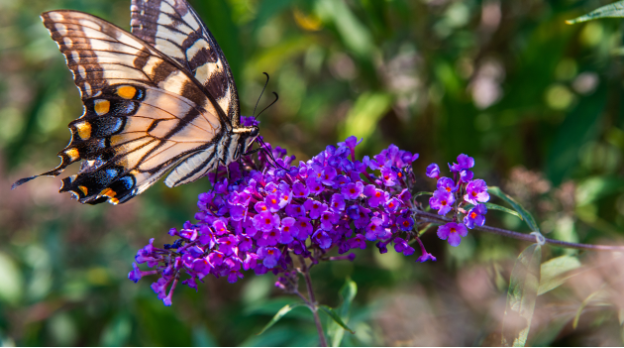
What Is a Pollinator Garden?
A pollinator garden is a thoughtfully designed space that supports native pollinators by providing food (nectar), shelter, and host plants for egg-laying and growth. Unlike traditional flower beds, pollinator gardens prioritize native plant species and ecological function over just aesthetic appeal.
Think of it as a “pit stop” for nature’s hardest workers—bees, butterflies, hummingbirds, and songbirds.
Why Pennsylvania Needs Pollinator Gardens
Here in Berks County and across the Northeast, we’re losing native plant communities to lawns, pavement, and imported ornamentals. Monarch butterflies once fluttered freely across meadows filled with milkweed. Today, those meadows are gone—replaced by development, and worse, sterile landscapes that offer no ecological benefit.
But restoring even a small piece of that balance starts right in our own backyards.
At Anewalt’s, we believe there’s a deeper purpose to what we plant. Stewarding the land is part of a greater calling:
“The Lord God took the man and put him in the Garden of Eden to work it and take care of it.”
— Genesis 2:15
Caring for pollinators isn’t just about protecting butterflies and bees—it’s about honoring the role we’ve been given to nurture the natural world. Every native plant we install, every milkweed we plant, is a step toward a healthier, more vibrant ecosystem.
We’ve seen firsthand how quickly pollinators return when you reintroduce native plants. In fact, the very day we planted our test plot, bees arrived—drawn in from what felt like miles away!
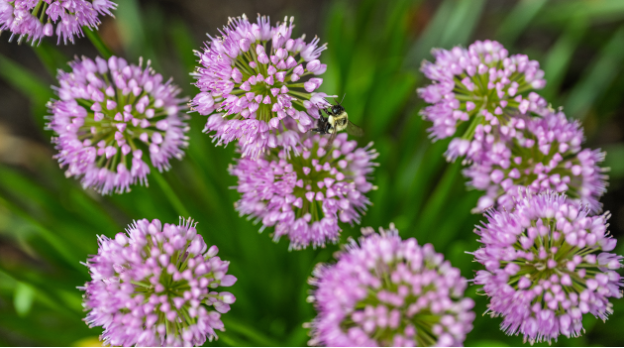
Best Plants for Pollinators in PA
Here’s the good news: a pollinator garden can be both functional and stunning. These native plants thrive in our region and offer continuous blooms from early spring through late fall:
Top Pollinator Plants We Love at Anewalt’s:
- Milkweed (Asclepias spp.): The only host plant for monarch caterpillars. Without it, they simply can’t survive.
- Bee Balm (Monarda ‘Balmy Purple’): A favorite of butterflies and hummingbirds.
- Agastache ‘Blue Fortune’: Also called hyssop—lavender-blue flowers and minty scent.
- Liatris ‘Kobold’ (Blazing Star): Purple spikes beloved by butterflies.
- Black-Eyed Susan (Rudbeckia): A fall favorite—and its seed heads feed birds in winter.
Bonus Plants for Bloom Variety:
- Purple Coneflower (Echinacea)
- Lavender
- Goldenrod (Solidago)
- Joe-Pye Weed (Eupatorium)
- Native shrubs like elderberry or viburnum
- Groundcovers like creeping phlox or barren strawberry
Design Tips for a Thriving Pollinator Garden
You don’t need acres to make a difference. A 10×10-foot space—or even planters on a patio—can support migrating monarchs, honeybees, and hummingbirds.
Our favorite design tips to attract pollinators:
- Group plants in clusters to help pollinators spot them easily.
- Layer heights to mimic nature: tall plants in the back, mid-height in the middle, and groundcovers in front.
- Avoid pesticides. Most native gardens are self-sustaining when designed right. Ladybugs and lacewings naturally manage pests.
- Choose continuous bloomers so there’s always something flowering.
We cut our Waystation garden back in early spring—not fall—to ensure pollinators can overwinter safely.
The Eco-Friendly Advantage
Pollinator gardens do more than support insects. They:
- Conserve water and improve soil health
- Support birds with seed heads and shelter
- Sequester carbon with deep-rooted native perennials
- Create self-sustaining, low-maintenance micro-habitats
Plus, they’re downright joyful. There’s nothing quite like sipping coffee while watching butterflies dance through your yard.
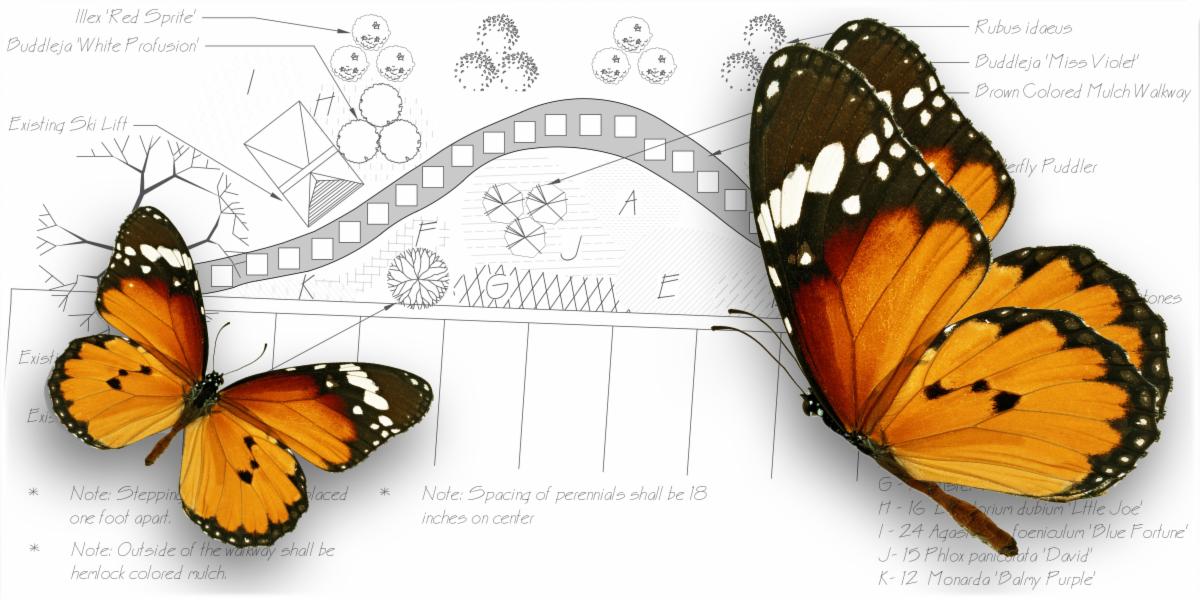
How Anewalt’s Designs Pollinator Gardens
We don’t just install pollinator plots—we craft purposeful, stunning spaces that blend into your landscape. Whether it’s a serene corner of your backyard, the centerpiece of a front yard transformation, or part of a larger estate garden, we design pollinator habitats that:
- Use native species
- Can be certified Monarch Waystations (if desired)
- Require minimal maintenance
- Offer year-round beauty and habitat
We also host visits to our garden so you can see the magic for yourself.
💬 One visitor said: “It was incredible—within minutes of planting, there were bees and butterflies already checking it out. My kids were amazed.”

How You Can Help — And Make an Even Bigger Impact
Planting a pollinator garden is already a beautiful act of stewardship. But now, it can also be an act of generosity.
For every pollinator garden we install in 2025, Anewalt’s will donate $100 in your name to the IM ABLE Foundation—a local nonprofit committed to making physical activity accessible for individuals with disabilities through adaptive equipment and inclusive programming.
That means your garden will help:
- Bees, butterflies, birds, and biodiversity
- Your neighborhood and the local environment
- And people of all abilities across Pennsylvania
We’re on a mission to install 100 pollinator gardens this year—that’s $10,000 raised for IM ABLE, and a whole lot of habitat restored.
It’s Simple. It’s Beautiful. It’s Needed.
✅ Just 100 square feet is all it takes to qualify as a pollinator garden
✅ Every garden supports critical species and local ecology
✅ Your garden becomes a living legacy that gives back in more ways than one
Let’s get your backyard buzzing—for a great cause. Download and share our flyer!
Check out this video on the cause.
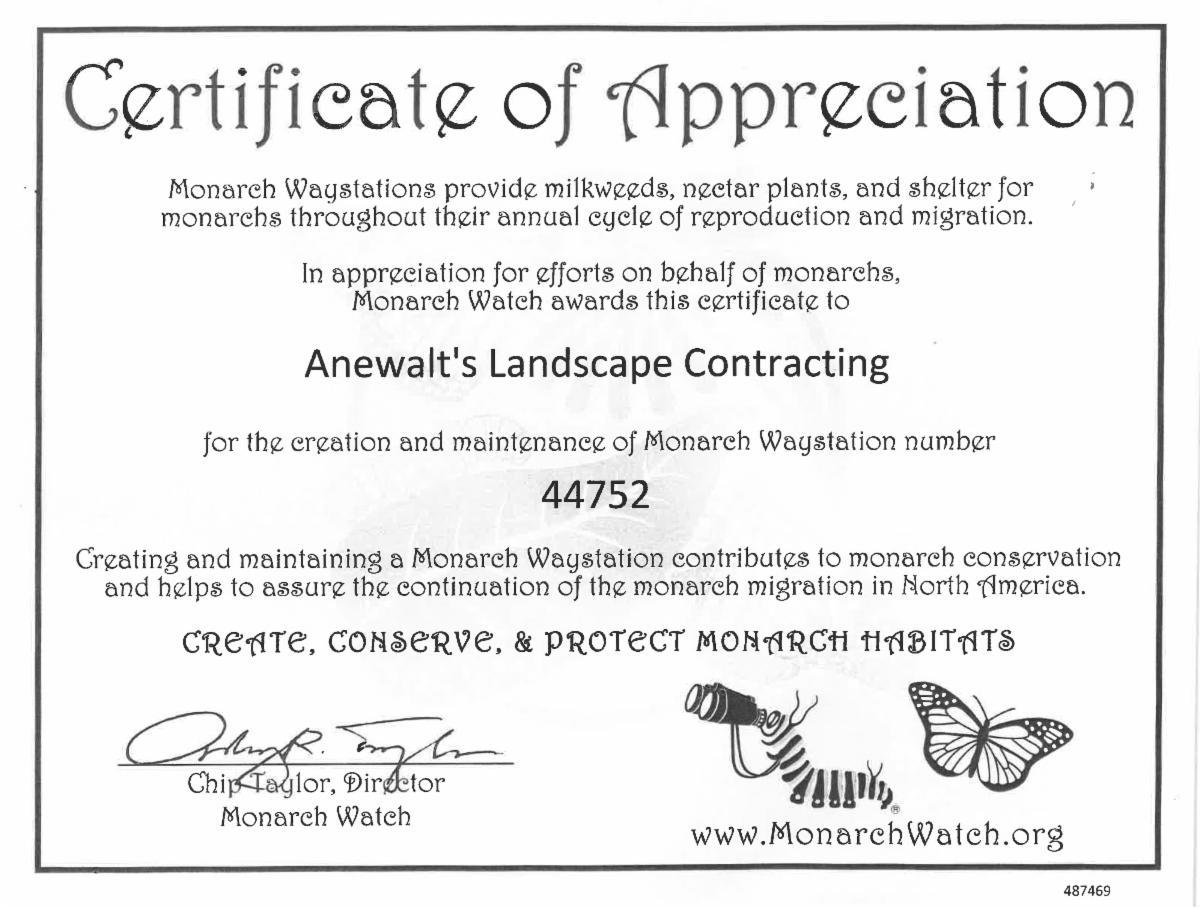
Ready to Plant One of Your Own?
Anewalt’s offers professional design and installation services for pollinator gardens. For about $1,500, we’ll amend your soil, source native plants, and install a 10×10 plot designed to bloom from spring to fall. All you need to do is enjoy it (and water it during dry spells).
Let’s bring beauty and biodiversity back—one pollinator garden at a time.
📅 Schedule a consultation or stop by our Bernville studio to walk through our own Monarch Waystation.
🌿 Because when we plant with purpose, we build more than landscapes—we build legacies.
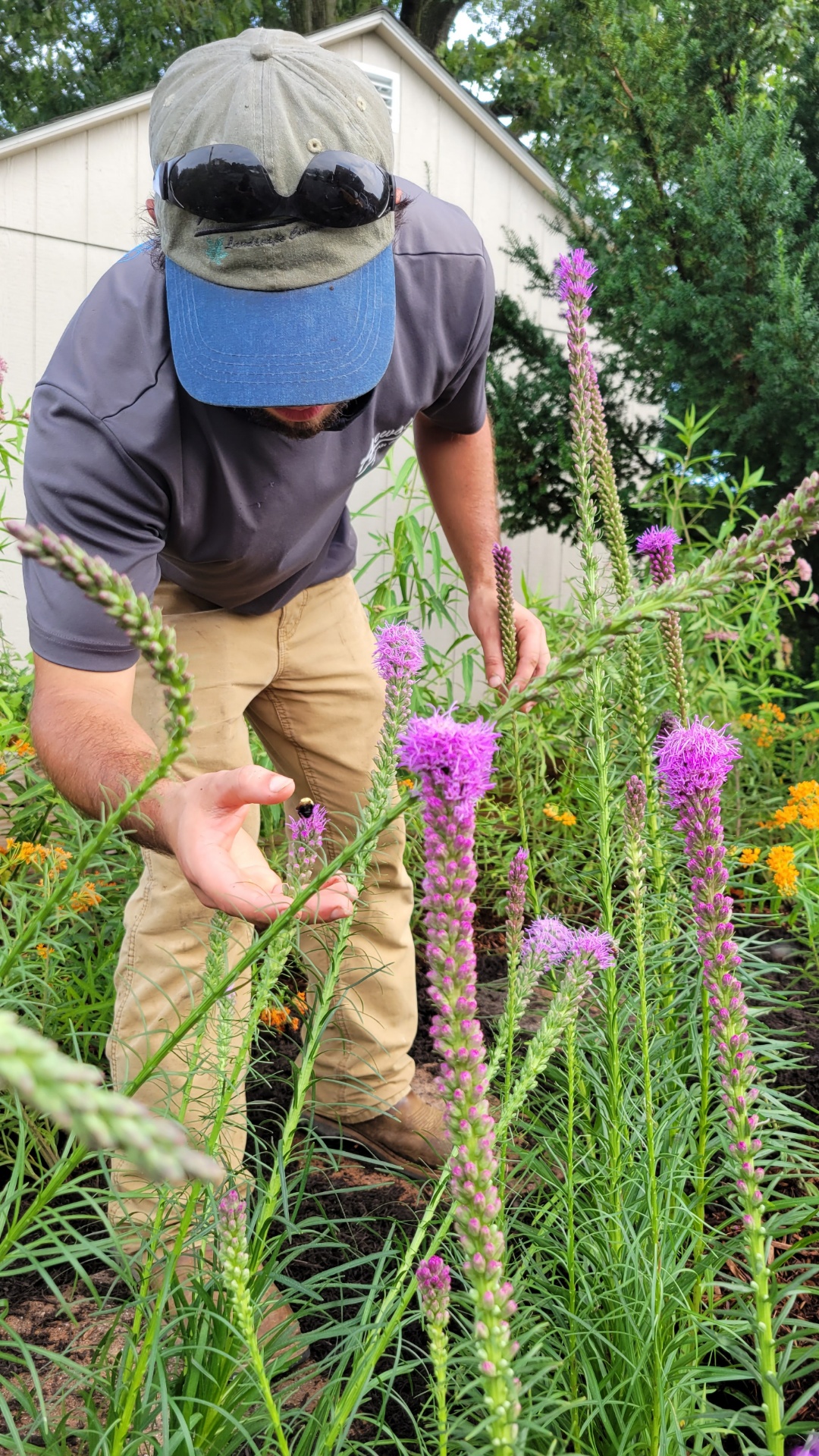
Pollinator Garden FAQs
- What is a pollinator garden and why is it important?
A pollinator garden is a landscaped area designed to attract and support bees, butterflies, hummingbirds, and other pollinators. It includes native plants that provide nectar, pollen, and habitat. These gardens are critical to reversing pollinator decline and restoring biodiversity.
- What plants attract pollinators in Pennsylvania?
Native Pennsylvania plants that attract pollinators include milkweed, bee balm, coneflower, goldenrod, blazing star (liatris), lavender, and Joe-Pye weed. These plants provide food and habitat throughout the growing season.
- Why are monarch butterflies endangered?
Monarch butterfly populations have declined by over 90% due to habitat loss, especially the removal of milkweed—the only plant monarch caterpillars can eat. Urban sprawl and agricultural development have wiped out much of their breeding ground.
- What is a certified Monarch Waystation?
A certified Monarch Waystation is a designated habitat that provides milkweed, nectar plants, and shelter to support the complete lifecycle of monarch butterflies. Anewalt’s offers Monarch Waystation design and installation services to help homeowners support this vital species.
- How much space do I need for a pollinator garden?
You can make an impact with as little as 10×10 feet. Pollinator gardens don’t have to be large or continuous—multiple small plots or containers can still support pollinators effectively.
- Do pollinator gardens require pesticides or fertilizer?
Not necessarily. Pollinator gardens work best when planted with native species that thrive with minimal intervention. Anewalt’s uses organic fertilizer during installation and recommends letting nature handle pests with beneficial insects like ladybugs and lacewings.
- Can pollinator gardens increase property value?
Yes. A well-designed pollinator garden enhances curb appeal, adds seasonal color, and showcases eco-conscious landscaping—making your property more attractive to buyers and neighbors alike.
- How do I maintain a pollinator garden?
Pollinator gardens are low maintenance. Water during dry spells, remove invasive weeds, and cut plants back in early spring. Anewalt’s designs gardens that thrive with minimal intervention while supporting pollinators year-round.
- What does it cost to install a pollinator garden with Anewalt’s?
A typical 10×10 pollinator garden installed by Anewalt’s costs around $1,500. This includes soil preparation, high-quality native plants, and professional installation.
- Can I visit a pollinator garden before I decide to install one?
Yes! Anewalt’s certified Monarch Waystation at our Bernville studio is open for visits. It’s a living example of how pollinator gardens can be both beautiful and purposeful.

